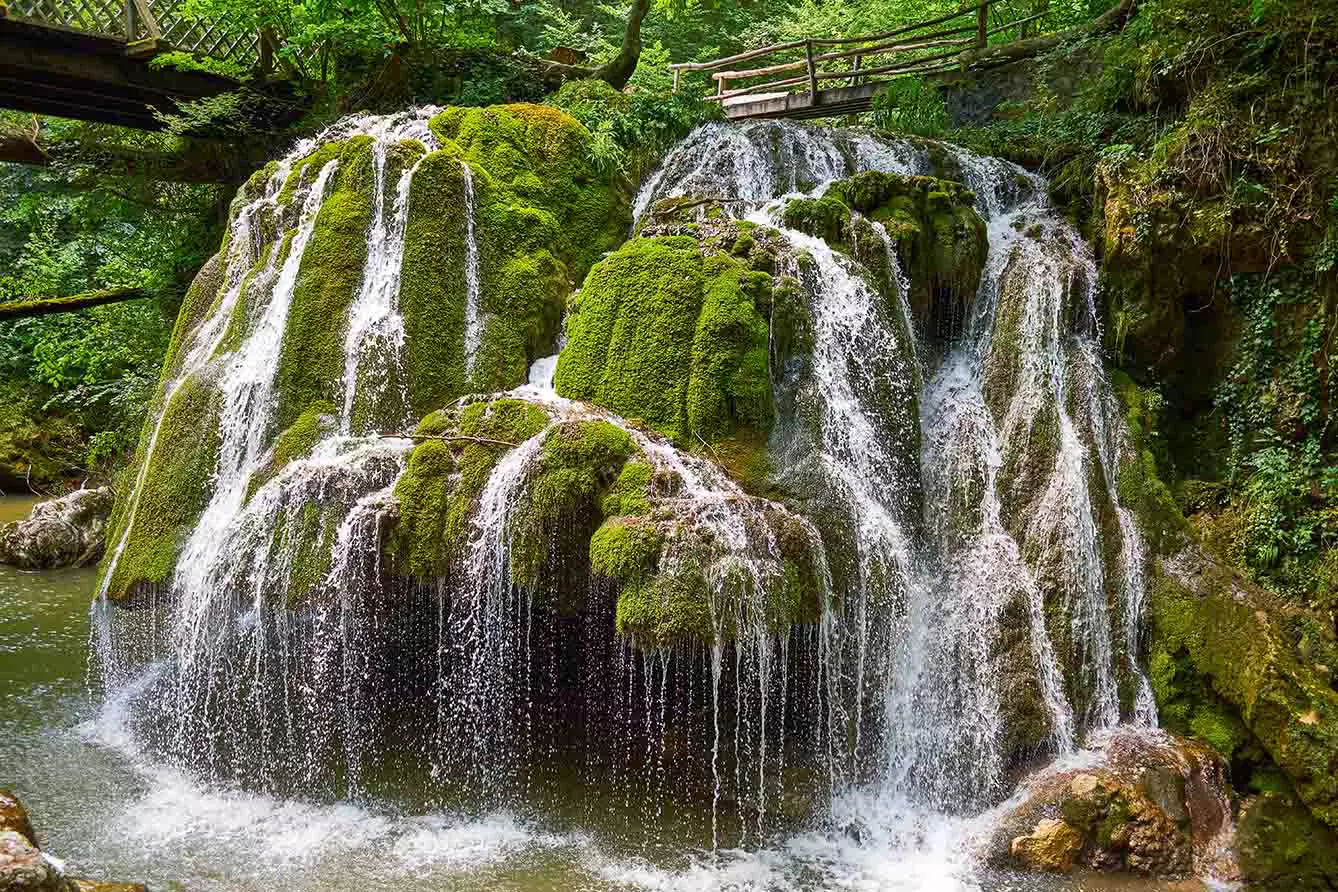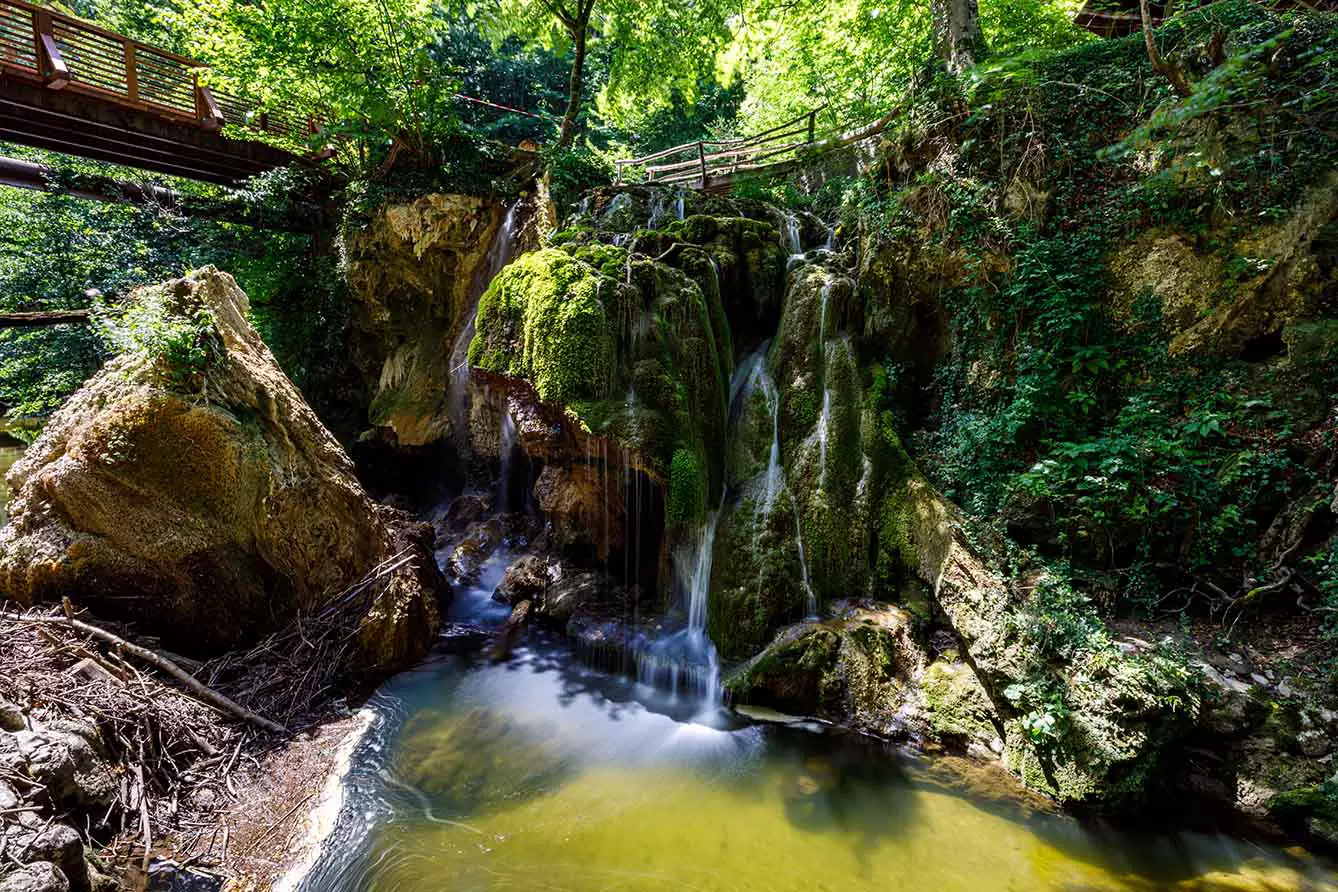It used to be one of the best, a “one in a million” type of site. Looking at it, it’s easy to imagine why. The colossal rocks added to its grandiosity, the green moss gave a touch of freshness to the eye, and the water, oh, the water… It cascaded like in no other place on this earth.
On its journey of approximately 200 meters, the spring quickly crossed the rough region of the Anina Mountains, only to reach the Bigăr waterfall and, full of grace, split into tiny streams of water, creating a veil of drops before collapsing onto the river below.
World Geography was indeed spot on in making it the no. 1 most unique waterfall in the world. The majesty of the site was evident to the untrained eye, and each year the Bigăr Waterfall attracted hundreds of tourists eager to take in the world’s most unique waterfall. The beauty of the site was undeniable. I’m using “was” because, unfortunately, when talking about Bigăr, we must now use past tense.
More than tourists had bargained for
It all happened one ironically sunny day. It was the first week of summer, and unsurprisingly, the site was packed with visitors, unaware of what was about to happen. Expecting to see the magnificent water falling, the visitors were shocked to experience the entire site falling. It collapsed right in front of their eyes, and as loud gasps began to fill the air, a thunderous crash resounded throughout the mountain as the massive rock hit the bottom of the river.


One second it was there; the next, it was gone. In the blink of an eye, the world’s most unique waterfall was reduced to rubble. It was the same question that could be read on the faces of every visitor: what caused the waterfall to collapse? Was it simply a natural and unexpected erosion phenomenon or the result of unnecessary, invasive human intervention?
A shock to the country
The events of June 7th shocked the country, as the most beloved waterfall and one of the country’s most appreciated sites was now destroyed. The National Agency in charge of Romanian Forests (ROMSILVA) quickly came forward with an explanation, claiming that the collapse was due to the growing limestone and moss deposits covering the rock, eventually causing it to collapse under its own weight. However, the sadness and disappointment of the people were not appeased by this reasoning. So when various environmental activists stated that the collapse resulted from human intervention and invasive works in the area, people were quick to side against the official justification.
Even though ROMSILVA promptly denied the rumors, people were already so infuriated by the possibility that human error led to the loss of Bigăr that they were unwilling to let it go. Where does the truth lie? Was the incident indeed an unforeseeable, natural event, or was human greed and irresponsibility to blame for the fall of the most unique waterfall in the world?
Natural accident or man-made catastrophe?
Historical facts quickly silenced both sides. For its beauty and intricacy, the site was declared a natural protected area in 2000. This reassured nature lovers that no invasive or intrusive actions could be taken within the site’s perimeter. All of the necessary improvements made to accommodate visits were completed in such a way as to ensure no harm to the waterfall, and the authorities had to approve each change.
Moreover, according to these established principles, no support would be installed to help balance the heaviness of the rocks to limit human intervention. And according to history, this was not the first event of such magnitude that has ever happened. The process responsible for the fall was common to similar structures, not to mention that small sections of the Bigăr rocks had fallen before, especially during floods.
Back in the day, it took years for the fallen pieces to regenerate and create the waterfall we were able to admire up until last year. Looking at the Bigăr waterfall today, one could only wonder when or if the site could ever regain its lost beauty.







